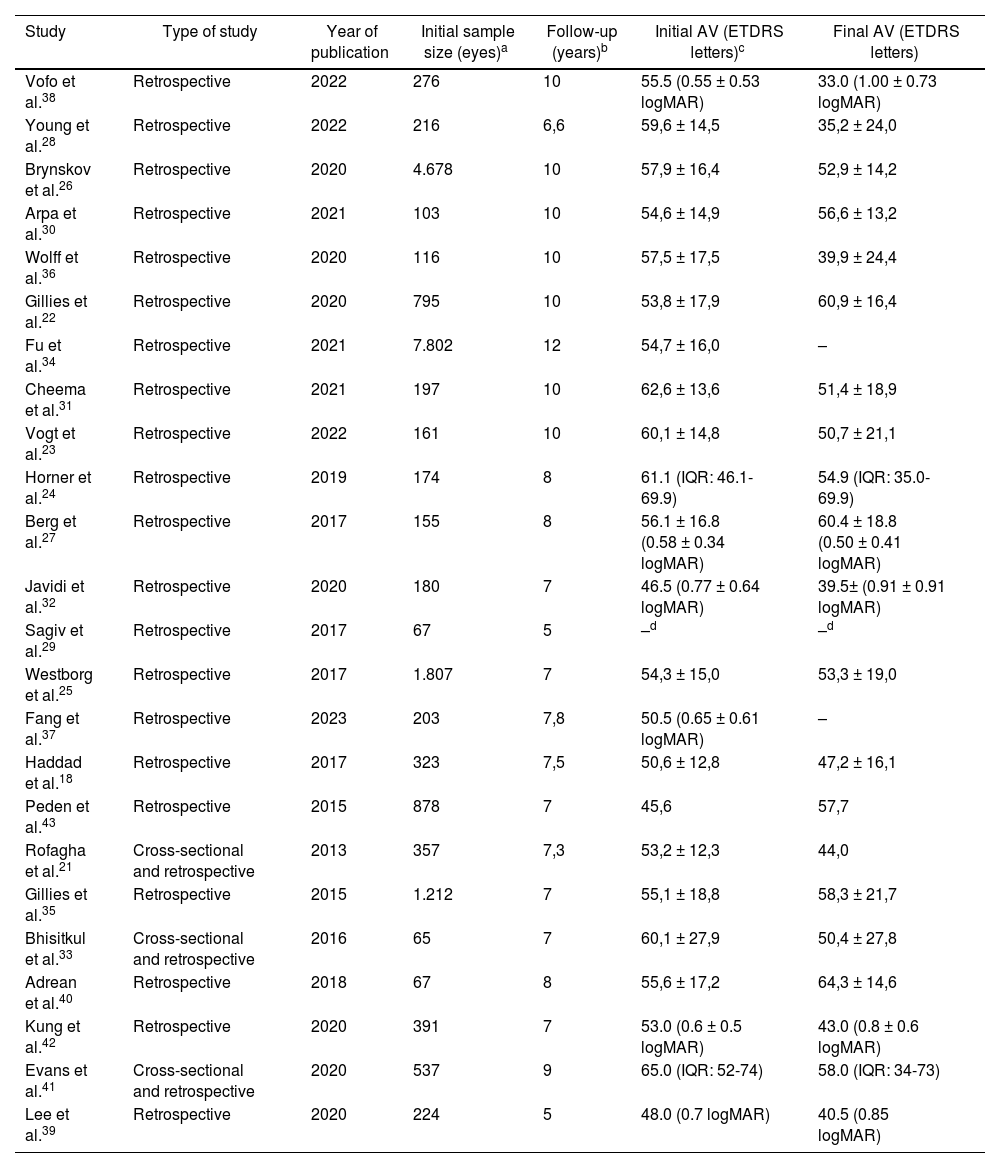Age-related macular degeneration (AMD) is one of the main causes of visual acuity (VA) loss in people over 50 years of age worldwide, with neovascular AMD (nAMD) accounting for 80% of cases of severe vision loss due to this disease. Anti-vascular endothelial growth factor (anti-VEGF) drugs have been used for the treatment of this disease for more than a decade, changing drastically the visual prognosis of these patients. However, initial studies reporting data on outcomes were short term. Currently, there are different series published on the long-term results of AMD after treatment with anti-VEGF, and the aim of this review is to synthesize these results. The mean follow-up of the included studies was 8.2 years (range 5-12 years). The mean initial VA was 55.3 letters in the Early Treatment Diabetic Retinopathy Study (ETDRS) (range 45.6-65) and the mean final VA was 50.1 letters (range 33.0-64.3), with a mean loss of 5.2 letters. At the end of follow-up, 29.4% of the patients maintained a VA > 70 letters. The 67.9% of patients remained stable at the end of follow-up (< 15 letter loss), with a severe loss (≥ 15 letters) of 30.1%. Fibrosis and atrophy were the main causes of long-term VA loss, occurring at the end of follow-up in 52.5% and 60.5%, respectively.
La degeneración macular asociada a la edad (DMAE) constituye una de las principales causas de la pérdida de agudeza visual (AV) en los mayores de 50 años en el mundo, siendo la DMAE neovascular (DMAEn) la causante del 80% de los casos de pérdida de visión severa debido a esta enfermedad. Hace ya más de una década que se emplean los fármacos antifactor de crecimiento del endotelio vascular (anti-VEGF) para el tratamiento de esta enfermedad, cambiando drásticamente el pronóstico visual de estos pacientes. Sin embargo, los primeros estudios de los que se disponían datos de los resultados eran a corto plazo. En la actualidad existen ya diferentes series publicadas de los resultados de la DMAE a largo plazo tras el tratamiento con anti-VEGF, siendo el objetivo de la presente revisión sintetizar dichos resultados. El seguimiento medio de los estudios incluidos fue de 8,2 años (rango: 5-12 años). La AV inicial media fue 55,3 letras del Early Treatment Diabetic Retinopathy Study (ETDRS) (rango: 45,6-65) siendo la AV final media 50,1 letras (rango: 33,0-64,3), existiendo una pérdida media de 5,2 letras. Al final del seguimiento un 29,4% de los pacientes mantuvieron una AV > 70 letras. El 67,9% de los pacientes se mantuvo estable al final del seguimiento (< 15 letras de pérdida), existiendo una pérdida severa (≥ 15 letras) del 30,1%. La fibrosis y la atrofia fueron las principales causas de pérdida de AV a largo plazo, presentándose al final del seguimiento en un 52,5% y un 60,5%, respectivamente.












